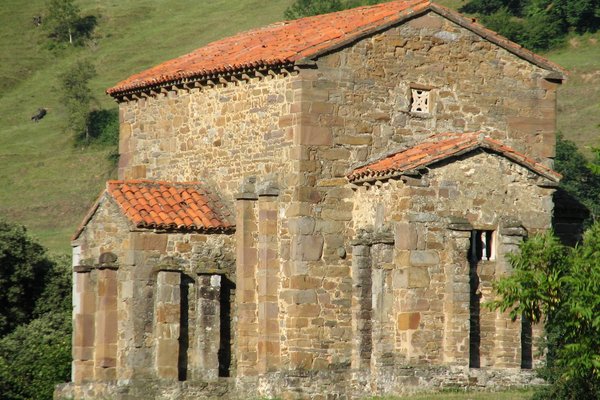Spain
Asturian Monuments
The Monuments of Oviedo and the Kingdom of the Asturias represent a distinct form of medieval Christian architecture developed in isolation.
The six constructions all date from the 9th century, when Asturias was a stronghold of Christianity, while the Iberian Peninsula was mostly under the Emirate of Cordoba. An innovative pre-Romanesque architectural style developed in this isolated region north of the Cantabrian mountains. The rich decorations were inspired by the styles of the Arab world and Asia Minor.
Community Perspective: The six are still in a remote setting, but the main ones can be reached on public transport (and a bit of walking) from Oviedo, as testified by Nan. The three later added components in the city of Oviedo are easily covered but less rewarding.
Site Info
Official Information
- Full Name
- Monuments of Oviedo and the Kingdom of the Asturias (ID: 312)
- Country
- Spain
- Status
-
Inscribed 1985
Site history
History of Asturian Monuments
- 1998: Extended
- Camara Santa, the Basilica of San Julian de los Prados, and La Foncalada
- 1985: Inscribed
- Inscribed
- Type
- Cultural
- Criteria
- i
- ii
- iv
Links
- UNESCO
- whc.unesco.org
- Official
-
- spain.info — Santa Cristina de Lena Church
- santamariadelnaranco.es — Santa María del Naranco Church
- spain.info — La Foncalada
- Related
-
- en.wikipedia.org — Wiki on the Palace / Church of Santa María del Naranco
All Links
UNESCO.org
- whc.unesco.org — whc.unesco.org/
Official Website
- spain.info — Santa Cristina de Lena Church
- santamariadelnaranco.es — Santa María del Naranco Church
- spain.info — La Foncalada
- spain.info — San Tirso Church
- spain.info — San Miguel de Lillo Church
Related Resources
- en.wikipedia.org — Wiki on the Palace / Church of Santa María del Naranco
Community Information
- Community Category
- Religious structure: Christian
Travel Information
Undergoing Restoration or Repair
Bilbao hotspot
Northwestern Spain hotspot
Recent Connections
-
Perfect Inscriptions
1985 -
Undergoing Restoration or Repair
Church of Santa María del Naranco: clos… -
Depicted in Mizielinska Maps
San Miguel de LilloSee i.pinimg.com
Connections of Asturian Monuments
- Trivia
-
-
Only portion of building inscribed
Only the Camara Santa of Oviedo cathedral -
Depicted in Mizielinska Maps
San Miguel de LilloSee i.pinimg.com
-
On Euro coins
Santa María del Naranco - Commemorative 2 euro coin Spain 2017
-
- History
-
-
Located in a Former Capital
Asturian Kingdom
-
- Architecture
- World Heritage Process
-
-
Extended
1998: Camara Santa, the Basilica of San Julian de los Prados, and La Foncalada -
Perfect Inscriptions
1985 -
Extensions on Tentative List
Church of San Salvador de Valdediós
-
- Constructions
-
-
Monumental Fountains
La Foncalada -
Baths
Santa Maria del Naranco (former palace)
-
- Timeline
- WHS Hotspots
-
-
Bilbao hotspot
Fast bus connections take you to Oviedo in 3,5 hours, where you can explore the Church of Santa María del Naranco, Church of San Miguel de Lillo, Cámara Santa and La Foncalada -
Northwestern Spain hotspot
Northwestern Spain hotspot
-
- Visiting conditions
-
-
Undergoing Restoration or Repair
Church of Santa María del Naranco: closed from Oct 2023 for at least 4 months
-
News
No news.
Recent Visitors
Visitors of Asturian Monuments
- Adolfo
- Adrian Turtschi
- Alberto Rodriguez Gutierrez
- aleserre
- Alexander Barabanov
- Alexander Lehmann
- Ammon Watkins
- Ana Lozano
- Angela Vandyck
- Anna Wludarska
- Antonio J.
- Argo
- Aspasia
- Astraftis
- Atila Ege
- BaziFettehenne
- Bill Maurmann
- Bin
- Birgitte Sørensen
- Bram de Bruin
- campmany
- Carlos Sotelo
- Caspar
- Catoplayer
- CeeMon
- Cheryl
- Christian Wagner
- Christravelblog
- Claire Bradshaw
- Clyde
- Cristina Erba
- CugelVance
- Dani Cyr
- Daniela Hohmann
- Daniel Chazad
- David Berlanda
- Dimitar Krastev
- Dimitrios Polychronopoulos
- DonQuijote
- Dorejd
- Echwel
- Els Slots
- Emilia
- Eva Kisgyorgy
- Evgenii
- fabi-ddorf
- Fan Yibo
- Femke Roos
- Filip Murlak
- FK
- GeorgeIng61
- Gernot
- Grzegorz Andruszkiewicz
- Harry Mitsidis
- Hubert
- Iain Jackson
- Ian Cade
- Ivan Rucek
- Jakob F.
- Janina Lehmann
- Jan-Willem
- Jarek Pokrzywnicki
- Jasam
- Javier
- Javier Coro
- Jay T
- Jeanne OGrady
- Jens
- Jezza
- Joel on the Road
- Jonas Kremer
- Jonas Martinsson
- Juha Sjoeblom
- KarenBMoore
- Kbecq
- KentishTownRocks
- Kevin247
- Klara Woodson
- Krzysztof B
- Kurt Lauer
- Lara Adler
- LaVale
- Loic Pedras
- Luboang
- Lucas Del Puppo
- Luis Filipe Gaspar
- Maciej Gil
- Malgorzata Kopczynska
- Martin
- Mathijs
- MH
- M. Huineman
- MichaelH
- Michael Novins
- Miguel Marquez
- Mikan22
- Mikko
- Mikko Syrjä
- Milan Jirasek
- MMM
- nan
- Nihal Ege
- PabloNorte
- Patrik
- Patrik_globe
- Paul Schofield
- Persian Globetrotter
- Petteri
- Philipp Leu
- Philipp Peterer
- Piotr Wasil
- Porcho
- Randi Thomsen
- Remigiusz
- Reza
- RobRos
- rogerding
- Roger Ourset
- Roman Bruehwiler
- Roman Raab
- Sandmann15
- Schnitzel
- scubarrie
- Shandos Cleaver
- Shijie ZHU
- sibariam
- Simonh
- Slavi
- Solivagant
- Stan
- Stanislaw Warwas
- Stijn
- Svein Elias
- Szucs Tamas
- Tamara Ratz
- Taotao Chen
- Tarquinio_Superbo
- Thomas Buechler
- Thomas van der Walt
- Tim Allen
- Tom Flaten
- Tonisan
- triath
- usagi1974
- Vanessa Buechler
- Viaje al Patrimonio
- voyager
- Walter
- Wojciech Fedoruk
- Xander Huang
- Xiong Wei
- Xiquinho Silva
- Zoë Sheng
Community Reviews
Show full reviews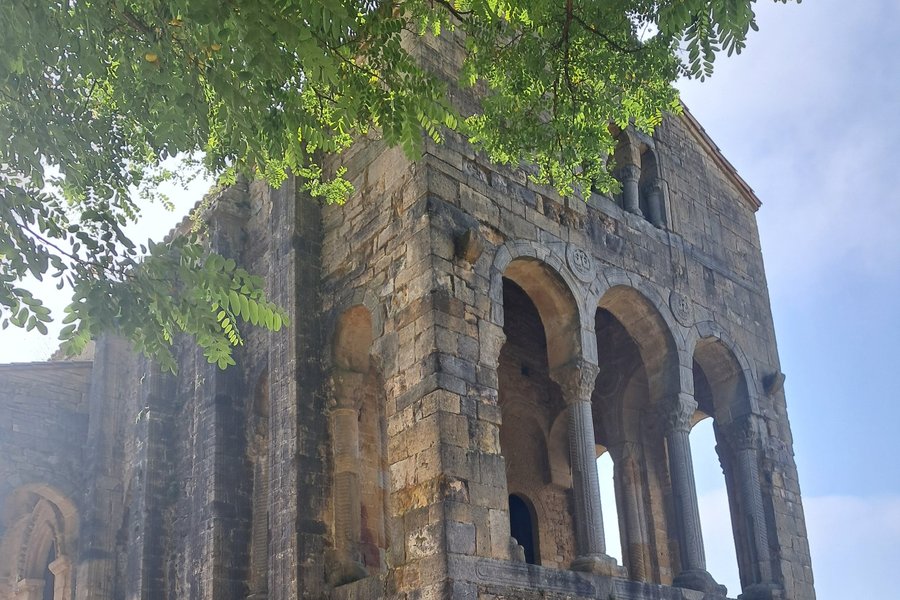
Recently, I made a short weekend trip to Oviedo (I live in Cantabria province, which borders Asturias). Visiting one of the World Heritage Sites close to home (and with not-so-many reviews) inspired me to write a review so here it is:
Visit to the WHS
1. Cámara Santa
First, we visited the town centre, walking along some of the streets. This way, we saw several buildings such as the Teatro Campoamor (where the Princess of Asturias Awards are given) and the cathedral, which is part of the "Routes of Santiago de Compostela" WHS. The cathedral itself is nice but not necessarily the most impressive cathedral in the north of Spain. However, it does house the Cámara Santa, one of the components of this WHS.
The main reason for its inclusion is that it houses several treasures form the Kingdom of Asturias. Most notable among these is the Victory Cross (Cruz de la Victoria), which today appears in Asturias' flag. It is said to be the cross carried by Pelayo when he and his forces defeated the Umayyads in the battle of Covadonga (722). This battle is the main reason the Umayyads didn't conquer the entirety of the Iberian Peninsula and marks the start of the Kingdom of Asturias. This battle is thus also regarded in Spain as the closest thing we have to a sort of "foundational myth", since the Kingdom of Asturias would eventually become the Kingdom of Castile; and the battle, while real, has probably …
Keep reading 0 comments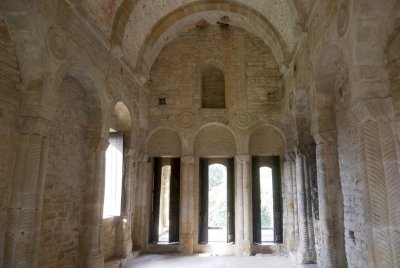
For me, the Visigoths were a short lived episode of late antiquity, an afterthought of the Roman Empire that faded away quickly. In reality, they ruled Spain for 250 years, before being swept away by the Muslim conquests. Almost swept away, I have to write, as Asturia, a mountainous region in Northern Spain remained independent under a Visigoth ruler, Pelayo.
There are different versions of what happened and the circumstances thereof. In the myth, he rebelled, there was a battle against the Arab overlords and he won. Or he simply didn't lose. Looking at the territory of Northern Spain, I think the mounted Arabs had a hard time. The mountains and hills don't seem to be suited for a cavalry based army, but great for guerrilla warfare.
Pelayo's small kingdom would form the nucleus for the kingdom of Asturias, which would grow over the centuries, eventually to form Spain via union with Castille. To this day the king of Spain claims descendance from this local Visigoth noble.
The buildings included in the site date from the 9th century. By then, the kingdom was firmly established and the Muslim onslaught stopped. They are small in size compared to what came before (Romans) or comes later (high middle ages), but comparable to what you see in the Carolingian empire.
I managed to see four components:
- Church of Santa María del Naranco (a former palace).
- Church of San Miguel de Lillo
- The Cámara Santa …
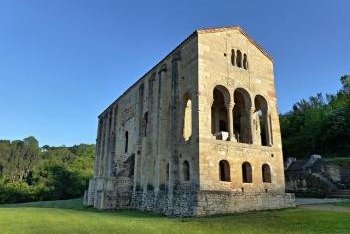
I visited all the 6 sites of this WHS in June 2016. I stayed for 2 nights in a hotel near Monte Naranco. The first day I visited Santa Maria del Naranco, San Miguel de Lillo and Santa Cristina de Lena. The first two can only be visited with a guided visit in Spanish and tickets can be bought at Santa Maria del Naranco. Next to these two sites there is a small information centre as these are the most visited sites being quite close to Oviedo by car/public transport. Plan ahead not to visit on Mondays as pretty much everything would be closed. Santa Maria del Naranco is mostly famous for its peculiar architecture as well as for the unique engravings and sculpted capitels. San Miguel de Lillo has a few mural painting left although most of it is damaged due to humidity and sunlight. Photography is not allowed inside this church. Don't expect elaborate paintings as these sites are quite old. Make sure to pay attention to the beautifully carved walls on the sides of the entrance which can be appreciated just before exiting as when the second door is opened for people to go out, the sunlight reveals the great detail. Next I drove just outside Pola de Lena to visit Santa Cristina de Lena. Make sure to have a GPS or else follow the signs which direct you off the highway through Lena proper. This church has the best natural setting and panorama once you arrive …
Keep reading 0 comments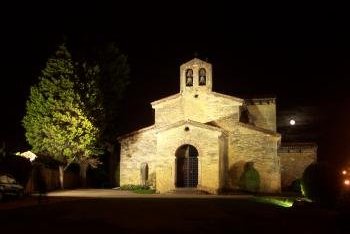
At the start of my trip around northern Spain I based myself in Oviedo, to enable me to see a bit of Asturian countryside and also the bulk of the sites in this inscription.
My first stop was to walk up to the sites at Monte Naranco overlooking the city. I was surprised by how small the monuments actually were; there was not a huge amount of room especially inside San Miguel de Lillo. The architecture was impressive in an understated, almost crude kind of way, and there were lovely sculpted detailing in the former palace of Santa Maria. The two sites were surrounded by nice green pastures and afforded wonderful views over Oviedo, especially down to Santiago Calatrava’s striking new conference centre. They are about 3km west of the station and uphill, it took me about 35 minutes to walk there from the station but Bus 10 is probably a better option for those that don’t fancy a bit of a hike. When I visited tours were given in Spanish, but I found it fairly easy to understand the gist as I had done a bit of background reading.
I walked back down into the city, accompanied by the sound of clunking cowbells in the nearby pastures and bagpipes at a local wedding. I didn’t make it down in time to see any of the interiors of the inscribed sites but did enjoy walking around and people watching on the streets of the charming old town. The Camara Santa …
Keep reading 0 comments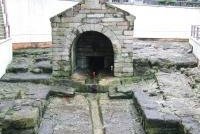
During two days in Oviedo I managed to visit all 6 WHSs.
The Camara Santa (inside the cathedral) contains valuable jewel encrusted relics.
The Foncalada is an ancient spring located in a niche beneath a busy road junction.
St Julian de los Prades church, 1200 years old contains well-preserved frescoes. I reached it by bus #2 from the city centre.
Sta Christina's church I reached from La Cobertoria railway station where nearby there is a signboard showing several paths leading up to the church, some steeper than others.
San Miguel and Sta Maria churches on Monte Naranco I reached by bus #10 to the Cruces car park, from where there are walking tracks to the respective churches.
Keep reading 0 comments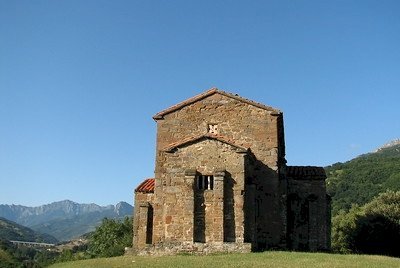
I had chosen "Oviedo" as the short title for this WHS, but digging more into the subject of this nomination I realized that that is misleading. The City of Oviedo isn't on the World Heritage List, although Spain tried it in 1998. It got rejected: "ICOMOS does not consider the historic centre of Oviedo per se to be of World Heritage quality". This WHS is all about a few surviving 9th-century monuments, the best examples of the Asturian pre-Romanesque architecture.
The original nomination (dating from 1985) highlighted 3 churches: Santa María del Naranco, San Miguel de Lillo and Santa Cristina de Lena. The first two are located in Naranco, a few km north of Oviedo, while the latter is in Lena (about 35km south). Lena is where I started my rounds. It’s a tiny, poor-looking village in the middle of the quintessential Asturian landscape with mountain peaks all around and lots of trees. The church is signposted from the main road, and there are 2 parking lots.
I first tried an approach from parking lot #1, but that’s a very steep climb. The second way of access was more to my liking: a wonderful path through the fields. Locals use it to walk their dogs or jog.
The church has a great location on top of the hill. It is open to visitors for a small fee, except on Mondays. And I was visiting on a Monday -- so I just admired its robust exterior, took a …
Keep reading 0 comments
